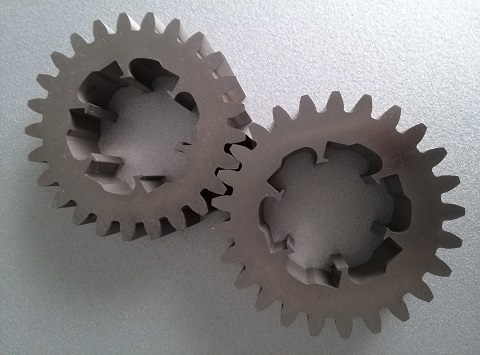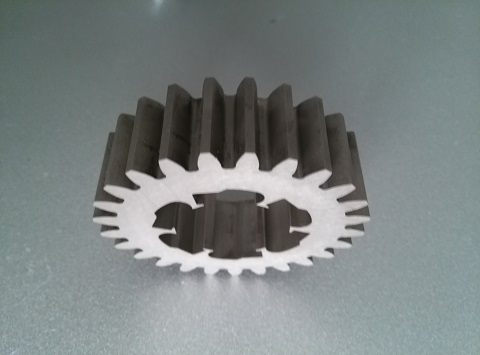- How to choose the electrode material for your EDM machine? Graphite Electrodes or Copper Electrodes?
- Unlock Precision Manufacturing at CIMT 2025: Discover Cutting-Edge EDM Solutions
- Applications of Wire Cutting Machines
- What are the Advantages of wire EDM Machine with Auto wire threading?
- What are the Characteristics of Working Fluid for Wire EDM Machine?
- Merry Christmas &Happy New Year of 2025!
- What is the working principle of Chemical Deburring (Electrochemical Deburring)?
- What are the differences between the Wire Cut EDM machine and the Laser Cutting Machine?
- FRQ about how to choose a suitable wire cut EDM machines
- What is the main usage of the wire cut EDM machines?
Wire EDM (Electrical Discharge Machining) machines are widely used in manufacturing for their precision and versatility. However, like any technology, they have both advantages and disadvantages. Here’s a detailed overview:

Advantages of Wire EDM Machines
- High Precision and Accuracy:
- Wire EDM machines can achieve extremely tight tolerances, often within ±0.005 mm, making them ideal for intricate designs and complex geometries.
- Complex Geometries:
- Capable of cutting complex shapes, including sharp internal corners and small radii that are difficult or impossible to achieve with conventional machining methods.
- Minimal Workpiece Distortion:
- The process generates minimal heat-affected zones, reducing the risk of warping or altering the physical properties of the workpiece material.
- Variety of Materials:
- Wire EDM can work with a wide range of conductive materials, including hardened steels, titanium, and exotic alloys, which may be challenging for other machining processes.
- No Tool Wear:
- Unlike traditional cutting tools, wire EDM does not experience mechanical wear, leading to consistent cutting performance and reduced downtime for tool changes.
- Clean Process:
- The process is relatively clean, as it does not produce chips or debris like traditional machining. The use of dielectric fluid also helps keep the workspace clean.
- Automation Capabilities:
- Many modern wire EDM machines offer CNC automation, allowing for unattended operation and increased production efficiency.
- Versatile Applications:
- Suitable for a variety of applications, including mold making, aerospace components, automotive parts, and intricate medical devices.
- Good Surface Finish:
- Produces a smooth surface finish, which often requires little to no post-processing.

Disadvantages of Wire EDM Machines
- Speed Limitations:
- Wire EDM is generally slower than conventional machining methods, especially for thicker materials or large workpieces.
- Cost:
- The initial investment for wire EDM machines can be high, and operating costs, including maintenance and dielectric fluid, can also add up.
- Material Thickness Limitations:
- While wire EDM excels at thin materials, it can be less effective for very thick materials, as cutting speeds decrease significantly.
- Limited to Conductive Materials:
- Wire EDM can only process conductive materials, excluding non-conductive materials like plastics, ceramics, and wood.
- Dielectric Fluid Dependency:
- The process requires dielectric fluid for effective operation, which can lead to additional costs and environmental considerations regarding fluid disposal.
- Complex Setup:
- Setting up a wire EDM machine can be more complex compared to conventional machining, requiring skilled operators to program and calibrate the machine.
- Wire Breakage:
- Wire breakage can occur, particularly when cutting very intricate parts, leading to production delays and the need for adjustments.
- Surface Residue:
- The use of dielectric fluid can sometimes leave a residue on the workpiece, requiring cleaning after machining.
Summary
Wire EDM machines are powerful tools for precision machining, offering unique advantages for complex and high-precision applications. However, they also come with limitations, particularly in terms of speed and cost. The decision to use wire EDM should consider these factors in relation to the specific requirements of the project and the characteristics of the materials involved.
For more information about the wire cut EDM machines, please feel free to contact us directly.
Bob Li
Mobile(Whats app): +86-13338697597
Tech EDM Trade Co., Ltd
Tel: +86-512-68782578
Fax:+86-512-66671799
Email: sale@techedm.com
Email: edmachining@hotmail.com
Add: No. 58 Huajin Rd, 215153, Suzhou, China
www.techedm.com
- Home - About us - New products - News - FAQ - Inquiry - Contact us - Sitemap






 2024-10-14
2024-10-14